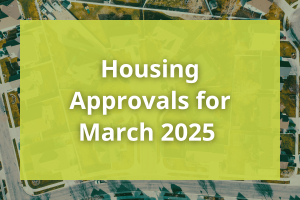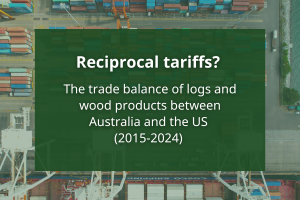Australia’s dwelling approvals totalled 188,185 dwellings year-ended November 2022, a decline of 18.0% on the previous period. For all that approvals have fallen, they are still above the level recorded for the same period just two years ago.
Here, we can see that although approvals are coming down the back of the cyclical wave, they are far from dipping below the surface.

Significantly, for the forestry and wood products industry, detached houses were down 23.5% from the previous period, but approvals remained strong in historical terms at 116,230. Similarly, while down, townhouses were still strong, with 6,754 Semi-detached 1 storey and 24,586 approvals recorded for the irrepressible Semi-detached 2 or more storeys.
While the 2+ Storey Townhouses have declined 8.2% over the year-ended November, they continue to move through the market, sub-dividing blocks, improving the affordability of housing and bringing ever-more sophisticated engineering and efficiency to the housing market.

The next chart shows us that for all they are in decline right now, it is houses that provide the stability to the total residential building market. The total month-on-month profile of dwelling approvals shown on the blue line is very choppy, while houses on the red line are comparatively benign and mainly predictable. In fact, that is what made the recent boom so difficult to manage – as we have discussed before – it went against the trend and shot up like a freak wave when the market had every reason to expect more gentle movements.

All States experienced lower approvals over the year-ending November 2022. Victoria continued to lead the nation’s approvals, with 61,724 separate dwellings given the nod over the year.

There are some positive signs on the horizon, with expectations the decline in approvals could run out of momentum before mid-year, before starting a shallow rise. One indicator has been that the recent decline in established house prices is reported by Domain property to be slowing, now the full impact of interest rate rises is starting to be experienced in the market. Read more about housing finance in this edition of Stats Count.
Meantime however, there is still a huge wave of work just sitting out the back, waiting to wash through the domestic economy. In that context, Antony Blackshaw, CEO of Henley Homes expects building conditions to improve from mid-year. Commenting that:
“…as the volume of work under construction eases …. The market would start to return to more normal settings…”.
Again, there’s more on the housing pipeline in this edition of Stats Count, but its worth noting, some level of normalcy cannot come quick enough to save a growing list of home builders who have gone under, in one way or another. Writing in the Australian Financial Review, Larry Schlesigner laid out a disturbingly long list of ‘name’ builders who failed to swim in the heavy seas of the last couple of years.
The tough conditions has meant the experience for some builders has been a profitless boom. Overall, the housing sector may be keeping its head above water, but right now, there are quite a few in deep water.
Like big wave surfing, building in historic booms is not for the faint hearted.



